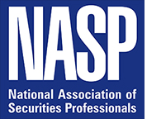Though some organizations had a diversity and inclusion statement in place long before 2020, the collective citizen witnessing of George Floyd’s murder in the U.S. spurred companies across the globe to issue statements that year denouncing racism and pledging to make progress on building more equitable cultures.
Today, the pledges and promises in these statements continue to be urgently important, and there must be organizational accountability for following through with actions that align with their words.
In this article, we’ll discuss what a corporate equity, diversity, inclusion statement is; share findings from our research study on statements issued by Fortune 100 and CEO Action Network companies; and provide advice for organizations on crafting truly meaningful equity, diversity, and inclusion statements and aligning them with measurable action steps to ensure progress.
And to help you get started with actions that lead to sustainable impact, be sure to download our Action Guide for Crafting a Meaningful EDI Corporate Statement & Approach below.
Also, as you may have noticed, at the Center for Creative Leadership, we refer to equity, diversity, and inclusion, or EDI, rather than DEI, with an intentional focus on leading with equity first. Our perspective is that an organization’s DEI efforts will be more effective when framed as EDI efforts, emphasizing the importance of pursuing greater diversity and inclusion only after investing in a culture of equity as the foundation.
Knowing that, let’s take a look at what our research found about organizational “diversity & inclusion statements,” DEI statements or, as we prefer to call it, EDI statements and approaches.



